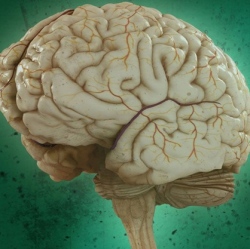
How many synapses in your brain are actually functioning? It’s an important question for diagnosis and treatment of disorders, such as epilepsy, Alzheimer’s, autism, depression, schizophrenia, and traumatic brain injury (TBI), one that could not be answered, except in autopsy (or an invasive surgical sample of a small area).
Now a Yale-led team of researchers has developed a way to measure the density of synapses in the brain using a PET (positron emission tomography) scan. They invented a radioligand (a radioactive tracer that, when injected into the body, binds to a type of protein and “lights up” during a PET scan) called [11C]UCB-J that allows for imaging a protein (called SV2A) that is uniquely present in all synapses in the brain.
They used this new imaging technique on baboons and humans, then applied mathematical tools to quantify synaptic density, and confirmed that the new method served as a marker for synaptic density. The method revealed synaptic loss in three patients with epilepsy compared to healthy individuals.
With this noninvasive method, researchers may now be able to follow the progression of many brain disorders by measuring changes in synaptic density over time or assess how well pharmaceuticals slow the loss of neurons.
Professor of radiology and biomedical imaging Richard Carson and his team plan future studies involving PET imaging of synapses for a variety of brain disorders.
Published July 20 in Science Translational Medicine, the study was supported in part by the Swebilius Foundation, UCB Pharma, and the National Center for Advancing Translational Science, a component of the National Institutes of Health.
